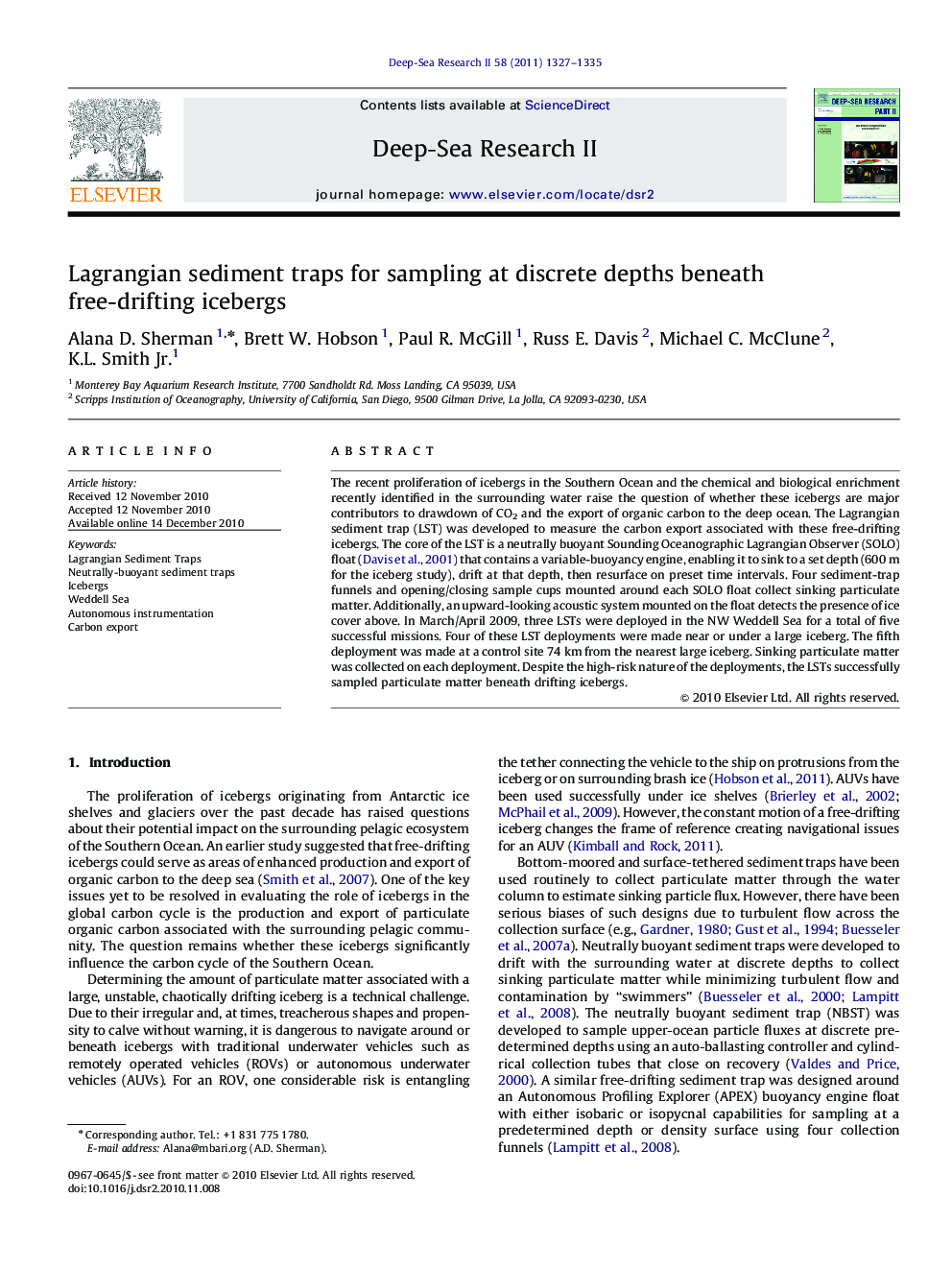| Article ID | Journal | Published Year | Pages | File Type |
|---|---|---|---|---|
| 4536867 | Deep Sea Research Part II: Topical Studies in Oceanography | 2011 | 9 Pages |
Abstract
The recent proliferation of icebergs in the Southern Ocean and the chemical and biological enrichment recently identified in the surrounding water raise the question of whether these icebergs are major contributors to drawdown of CO2 and the export of organic carbon to the deep ocean. The Lagrangian sediment trap (LST) was developed to measure the carbon export associated with these free-drifting icebergs. The core of the LST is a neutrally buoyant Sounding Oceanographic Lagrangian Observer (SOLO) float (Davis et al., 2001) that contains a variable-buoyancy engine, enabling it to sink to a set depth (600Â m for the iceberg study), drift at that depth, then resurface on preset time intervals. Four sediment-trap funnels and opening/closing sample cups mounted around each SOLO float collect sinking particulate matter. Additionally, an upward-looking acoustic system mounted on the float detects the presence of ice cover above. In March/April 2009, three LSTs were deployed in the NW Weddell Sea for a total of five successful missions. Four of these LST deployments were made near or under a large iceberg. The fifth deployment was made at a control site 74Â km from the nearest large iceberg. Sinking particulate matter was collected on each deployment. Despite the high-risk nature of the deployments, the LSTs successfully sampled particulate matter beneath drifting icebergs.
Keywords
Related Topics
Physical Sciences and Engineering
Earth and Planetary Sciences
Geology
Authors
Alana D. Sherman, Brett W. Hobson, Paul R. McGill, Russ E. Davis, Michael C. McClune, K.L. Jr.,
